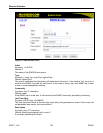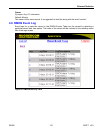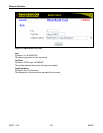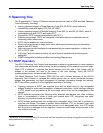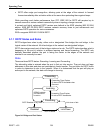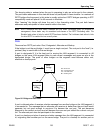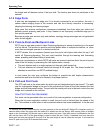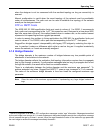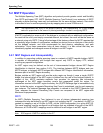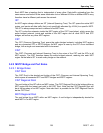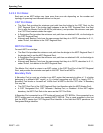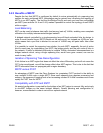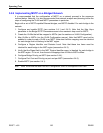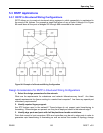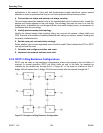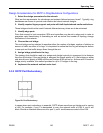
Spanning Tree
ROS™ v3.5 138 RS400
5.2 MSTP Operation
The Multiple Spanning Tree (MST) algorithm and protocol provide greater control and flexibility
than RSTP and legacy STP. MSTP (Multiple Spanning Tree Protocol) is an extension of RSTP
whereby multiple spanning trees may be maintained on the same bridged network. Data traffic
is allocated to one or another spanning tree by mapping one or more VLANs onto it.
Note: The sophistication and utility of the Multiple Spanning Tree implementation on a given bridged
network is proportional to the amount of planning and design invested in configuring MSTP.
If MSTP is activated on some or all of the bridges in a network with no additional configuration,
the result will be a fully and simply connected network, but at best, the result will be the same as
a network using only RSTP. Taking full advantage of the features offered by MSTP requires that
a potentially large number of configuration variables be derived from an analysis of data traffic
on the bridged network, and from requirements for load sharing, redundancy, and path
optimization. Once these parameters have all been derived, it is also critical that they are
consistently applied and managed across all bridges in an MST region.
5.2.1 MST Regions and Interoperability
In addition to supporting multiple spanning trees in a network of MSTP-capable bridges, MSTP
is capable of interoperating with bridges that support only RSTP or legacy STP, without
requiring any special configuration.
An MST region may be defined as the set of interconnected bridges whose MST Region
Identification is identical (see section 5.4.3). The interface between MSTP bridges and non-
MSTP bridges, or between MSTP bridges with different MST Region Identification information,
becomes part of an MST Region boundary.
Bridges outside an MST region will see the entire region as though it were a single (R)STP
bridge; the internal detail of the MST region is hidden from the rest of the bridged network. In
support of this, MSTP maintains separate ‘hop counters’ for spanning tree information
exchanged at the MST region boundary versus that propagated inside the region. For
information received at the MST region boundary, the (R)STP Message Age is incremented only
once. Inside the region, a separate Remaining Hop Count is maintained, one for each spanning
tree instance. The external Message Age parameter is refered to the (R)STP Maximum Age
Time, whereas the internal Remaining Hop Counts are compared to an MST region-wide
Maximum Hops parameter.
MSTI
An MSTI (Multiple Spanning Tree Instance) is one of sixteen independent spanning tree
instances that may be defined in an MST region (not including the IST – see below). An MSTI is
created by mapping a set of VLANs (in ROS, via the VLAN configuration) to a given MSTI ID.
The same mapping must be configured on all bridges that are intended to be part of the MSTI.
Moreover, all VLAN to MSTI mappings must be identical for all bridges in an MST region.
Note: ROS supports 16 MSTIs in addition to the IST



